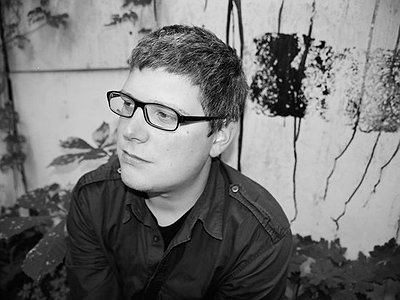When did you start composing - and what or who were your early passions and influences?
Composing came relatively late in my musical development. I actually started as a saxophone player when I was twelve years old. Four years later I was playing at the local sessions in my hometown in Switzerland together with a good friend trumpet player. In that time I was playing mostly jazz and free improvised music in very different contexts.
After a quick stay in New York in 1998 and some unfinished academic studies, I moved to Berlin in 2002 and progressively started to be involved with so-called experimental music in its broad spectrum: noise, electro acoustic music, improvisation, modern classical but also transdisciplinary projects. Composing came later as a natural extension to my activities as a performer and saxophone player as I got the chance to work and experiment with contemporary music ensembles and started to receive commissions to realise pieces.
Early passions are rooted in jazz and free music, mostly from the 40’s to the 60’s as well as rock music. Later, the first time I heard Xenakis’ music was a great and important shock. Then composers like Cage, Nono, Varese, Stockhausen, Parmegiani, Feldman and Ligeti were also essential discoveries for me.
In my early twenties, I also happened to meet Dave Phillips from Schimpfluch Gruppe who introduced me to performance art and a lot of adventurous music from black metal to harsh noise and industrial stuff, as well as a great variety of experimental sounds thanks to his huge and varied record collection and to his dedication in sharing it.
I remember being particularly impressed when I heard for the first time, Swans (filth & cop in particular), Corrupted, Masonna and other extreme musics from Japan, Dark Throne, Hermann Nitsch, Maryanne Amacher, Borbetomagus, Alvin Lucier but also traditional music from around the globe and many other bizarre and mysterious sound works.
What do you personally consider to be incisive moments in your work and/or career?
There have been luckily plenty. One of the interesting aspects of working as an artist is the social dimension. Meeting a lot of people through the travels and the projects. I’ve learned and still learn a lot by doing and also while working together with other artists. Moving to Berlin in 2002 has definitely been an important decision. I was 22 years old and did a tabula rasa with my artistic conceptions of the time.
In 2003, I had the chance to work with media artist Ulrike Gabriel who was outside of the music scene and introduced me to generative computer systems but also to some books by Ludwig Wittgenstein, semantics, media theory, critical thinking and all sorts of conceptual approaches. She has been a decisive encounter and having the chance to work with her had a strong impact on me. While working with her and my long time collaborator Gilles Aubry, we briefly met the biochemist and chaos theorist Otto E. Rössler during a lecture-performance at the Tübingen University and I remember it was quite an impressive meeting for the young musician I was by then. It was like discovering a totally different approach towards the creative processes than in a purely musical context.
Over the next years, touring extensively with the band Monno in rock and metal venues was also interesting to get exposed to yet another side of the music underground as well as developing a collective band dynamic.
More generally, all tours, projects and collaborations I’ve been involved in, in the last decade have been influential in attempting to progressively find an artistic identity. The numerous solo concerts I have had the chance to play, also helped, but mostly I think the contact to other great creative people and thinkers has been and still is decisive in my learning process.
I strongly believe in intuitive approaches and learning by doing: sometimes succeeding, sometimes failing. Learning on the field and from other people in addition to doing research by myself is for me a very important part of my artistic life.
What are currently your main artistic challenges?
This year I feel is a transition phase, as I tend to progressively escape from the instrumental playing and focus more on compositions and transdisciplinary projects. More generally my main artistic challenge is to keep learning further through experimenting, reading and travelling while realising new projects and collaborations. My artistic activities tend to be shape-shifting, slowly developing in different directions and adapting to different contexts. I don’t really know what the next crossroad will be but I do know that my path might lead towards works and collaborations with social sciences as well as interdisciplinarity while developing the musical tools and ideas I’ve been working with so far.
What do you usually start with when composing?
I usually start by getting familiar with the works of the ensemble or musician I’m writing for and about the general context of the work. Then I try to get a global picture and try to figure out the main structure or direction of the piece. Doing sketches and describing with words how I imagine the piece will sound can sometimes help.
I then do some research and always try to find inspiration and connections with other artistic works, for instance a Béla Tarr, a Jean Rouch or a Billy Wilder movie, a Bosch’s painting, a scientific paper or a text to trigger my imagination. Concrete writing starts generally after.
Another aspect is to find ways to notate sounds I have in my head to make them playable in a given situation and also to look for a path within my limited knowledge and experience. While writing, I sometimes tend to think that instruments and even electronic music will always be obsolete compared to the sounds of a strong earthquake, a volcano erupting, a space shuttle taking off, a violent storm at sea or a swarm of thousands of birds flying around a field.



